- Home
- P. T. Deutermann
Sentinels of Fire Page 3
Sentinels of Fire Read online
Page 3
“I suppose so,” I said. “Still—a guy in the water? And we drive by?”
“This’ll sound like bullshit, XO, but the tin can Navy is at the sharp end of the fleet spear. The Japs have to get through us to get a shot at the heavies, and the heavies expect us to keep that from happening. You’ve read the after-action reports. This carrier was damaged, that carrier was torpedoed, this battleship had two near misses, this cruiser took a kami on the bridge. And, oh, by the way, two destroyers were sunk.”
“Like we don’t count?”
“We count, all right, because when the heavies lose one of their tin cans, they’re just a little more vulnerable than they were before that tin can went down.”
“That’s a little cynical, don’t you think, Jimmy?”
“Maybe, but wait until you see where we’re going next.”
“The captain mentioned something about a picket line, up north and west of Okinawa?”
“Yes, sir, and I’m thinking it’ll take the Japs about one day to figure out who’s sounding the alarm when they head down from Japan to strike the amphibs or the supporting fleet units off Okinawa. You’ve seen what an air raid looks like when the whole carrier fleet is attacked. Now, take that same number of Jap planes and focus it on five or six single-ship picket stations.”
“Sounds like a real party,” I said. “I talked to the captain after what happened today. He’s a lot more upset than he let on out on the bridge.”
“He’s been a great skipper,” Jimmy said, “but there are times I think it’s starting to get to him. We were the first ship on the scene after the Littell broke in half and went down from a two-plane kami strike. We stopped to look for survivors, and the admiral himself got on the radio and ordered us back to our assigned AA (antiaircraft) station immediately. The skipper got a personal-for blast later, pointing out that he had created a hole in the AA screen by stopping, when there was obviously nothing that could be done for Littell. I think they recovered twenty-two out of three-hundred-plus once someone did go back. He was stone-faced for three days after that.”
I was appalled at that story, mostly because I’d never heard about the Littell. I realized now that my carrier background was showing—every destroyerman out here had heard the Littell story.
* * *
The following day I had both Chief Lamont and Chief Bobby Walker, the chief hospital corpsman, accompany me on my daily messing and berthing inspection. This was one of the exec’s principal duties, a daily inspection of all the berthing spaces, where the crew slept, and the messdecks, where the enlisted took all their meals. Each morning, after dawn GQ and morning quarters, each division assigned two men to compartment cleaning; they swept, swabbed, picked up the trash, hauled full laundry bags to the ship’s laundry, polished any brightwork, and generally cleaned up the crowded compartments. My job was to come around at ten thirty in the morning and make sure that that had all been done. Same thing for the crew’s dining area, called the messdecks, the galley, and the scullery, where trays and silverware were washed and sanitized for the next meal. Chief Lamont came along as my enforcer. If I saw problems I’d point them out to Lamont, and he would have a quiet word with the compartment cleaners as I headed for the next berthing space.
Chief Walker, an experienced and senior chief corpsman, or medic, was universally called Doc. Some destroyers had an actual medical officer assigned, but if there was a shortage—and with the upcoming landings, there would be a shortage—the tin cans made do with senior medics like Walker. He was a taciturn individual, tall and ruggedly built, with a razor-sharp flattop haircut, who’d served with Marines during the Guadalcanal campaigns of ’forty-two and ’forty-three. He had one assistant, a hospital corpsman second class, and together they formed the medical department, based in what was known as sick bay. On my daily tours he would pay particular attention to the galley and the scullery, measuring rinse-water temperatures, taking water samples from the ship’s potable water tanks, and making sure the cooks were keeping themselves sanitary while doing food prep. He held sick call every day right after quarters to deal with runny noses, sore throats, minor injuries, and the inevitable slacker who wanted out of the morning’s upcoming evolutions, like refueling detail. He looked at the morning sick call for bad trends: A sudden uptick in sore throats, for instance, meant that the scullery water temperature wasn’t high enough.
With the help of these two chiefs, I covered every nook and cranny in the ship during my first week and every week thereafter. I learned where the problem children lived, which compartments were the hardest to keep clean (the engineers’, whose daily association with black oil, lube oil, grease, rust, and the bilges made for a genuinely black gang), where the nonregulation coffeepots were stashed, or the laundry bags that hadn’t been taken aft, and many other things associated with packing three-hundred-plus men in spaces meant for two hundred. The daily inspections, except on Sundays, were one of the most important things an exec did. Your nose would tell you pretty quick if you were on a ship where the exec did not make daily inspections.
The Malloy was assigned to a carrier screen, meaning we went where the big ship went, maintaining a specified station on the carrier. We were constantly looking for Jap subs with our sonar, and we stood ready to defend against air attacks, which came just about daily. The carrier formations were vast—up to fifteen big-decks of the Essex class and another dozen or so of the smaller escort carriers. The fleet formation itself covered a circular area of just over fifty miles. There were antiaircraft light cruisers, heavy cruisers, and even battleships, which, now that the Jap fleet had been virtually eliminated from the sea, were used principally as massive antiaircraft gun platforms. Every third day we would go alongside either one of the carriers or an oiler to refuel and replenish food and ammo stocks.
When the Japs attacked from the air, the destroyers would close in around their assigned carriers in a tight circle and put up a sky-full of antiaircraft fire, called ack-ack from the sounds made by the smaller guns firing at any Jap plane who showed an interest in our carrier. The carriers, which had long-range air-search radars, would launch fighters into a Combat Air Patrol screen each morning to stations between Japan and the fleet formation. When a raid was detected, the CAP would be vectored to engage as far out from the screen as possible. The closer the Jap planes came, the more CAP they ran into, with the idea being to grind down the attacking formation to onesies and twosies by the time they got in close enough to target our ships.
I met with the captain each day after morning quarters and caught him up on the housekeeping and personnel issues. He in turn brought me up to speed on the operational events in our immediate future. Captain Tallmadge was a genuinely pleasant man, who took an abiding interest in his people. He was very patient with me. I had come from the carrier Navy with no experience in destroyers, so he took a lot of time to explain how things really worked in the world of tin cans. It was a refreshing change in leadership style; for the most part, my bosses had been somewhat distant, ready to give me the chance to sink or swim in whatever new assignment I was taking on. That was especially true on a carrier, where there were nearly three thousand people milling about at any one time. Tallmadge cared, and the whole crew knew it. Serving in Malloy was shaping up to be a pleasure.
Then we went north to the Okinawa picket line.
TWO
April 28, 1945
“XO.”
“Yes.”
“Morning stars, sir.”
“What about ’em?”
The quartermaster of the watch chuckled. “Nautical twilight in fifteen, sir,” he said. “You want Mister Enright to take it?”
“I’d love that, McCarthy,” I said. “But…”
“Yes, sir. Anyway, morning stars.”
“Got it,” I said. “On my way. Two sugars, please.”
“Ready and waiting, XO.”
“Captain up?”
“No, sir. Log says he went to his sea cabin at oh on
e thirty.”
I grunted. The captain was a heavy smoker who used all that nicotine to stay up as late as possible. Once he went down, however, he went down. It was one of my jobs to wake him up, which always took some doing. “On my way,” I said.
I got up, splashed some water on my face, and put on my uniform khakis. I stared at my reflection in the sink mirror and groaned at what I saw. The fifty-year-old face looking back at me was really only thirty-five. I’d aged fifteen years since we’d gone on the radar picket line. We all had. Even the ensigns were looking old. I went looking for my sea boots in all the clutter in my tiny “stateroom.”
The ship was quiet. Reveille was forty-five minutes away. The forced-draft blowers in Number Two Fire Room whined contentedly. The executive officer’s stateroom was in after-officers country just forward of and almost on top of number 2B boiler, as the hot steel deck readily attested. Dressed, I stepped across the passageway to the officers’ head to pump bilges. There was no time for a shower, and besides, one of our evaporators was on the fritz, so the ship was on water-hours. Rubbing my eyes, I collected my kapok life jacket and helmet and then headed topside to the bridge to take morning stars.
It was still dark when I stepped out onto the bridge, but I could make out the silhouettes of the bridge-watch team. I stopped for a moment to adjust my eyes and listen for any sign of problems. In happier times, the half hour before sunrise was always one of the best things about being at sea. Even in lousy weather, the first sight of the sea in the morning twilight is always a delight. Couple that with the smells of breakfast wafting up from the galley and that first cup of Navy coffee, and all the small terrors of steaming a blacked-out warship at night diminish with each passing moment of rising sunlight out on the eastern horizon.
Not now, though, and not here, some fifty miles north of the Okinawa amphibious objective area. We were aware of an altogether different rising sun up here on the radar picket line, one that came out of the sky in the form of a bomb-laden Jap fighter or bomber, intent on killing us all. I could literally feel the tension, because everyone up on the bridge knew that twilight on the Okinawa radar picket line was no longer anyone’s friend. People were scared, and with good reason.
The lee helmsman saw me and announced “XO’s on the bridge” to the rest of the watch standers. The officer of the deck, Lieutenant (junior grade) Tom Smithy, greeted me, as Quartermaster Second Class McCarthy handed me a ceramic mug of coffee.
“Morning, XO,” Smithy said. “Steaming as before on Okinawa picket station four-Able. LCS 1022 abeam to port, three thousand yards. Comms good. No contacts, air or surface. Gun crews sleeping on station. Visibility unlimited, seas flat, wind out of the northwest at five to seven knots. Barometer is steady at thirty-point-oh-two inches. GQ at zero six forty-five, sunrise at seven fifteen.”
“Very well,” I said. “Sounds like another great Navy day. I’ll be shooting stars on the port bridge wing. Remind me to get the captain up just before GQ.”
“Aye, aye, sir,” Smithy said and turned back to resume his scan of the horizon. It was nautical twilight, which meant that the horizon would begin to assume some definition as the ambient light slowly grew to the point where it was no longer dark but not quite daylight. It was the kind of light that was good for using a sextant—and also for a kamikaze pilot who had chosen to come in on the deck right before dawn, and that was why the ship would go to general quarters thirty minutes before the actual sunrise took place.
I went out to the portside bridge wing, where McCarthy had set up the sextant, my notebook and chronometer, and a list of celestial azimuths. Normally there would have been a makee-learn ensign on deck, but with the exhausting watch-and-watch routine of the picket stations, six hours on, six off, the captain had decided to suspend navigation training. It wasn’t as if we didn’t know where we were—forty-nine miles north-northwest of Okinawa—but it was a cardinal rule of the wartime destroyer force that the navigation officer shot stars whenever visibility allowed. Since Jimmy Enright was also the ship’s de facto operations officer, I’d begun doing the celestial navigation a couple times a week to spell him. At least once a day, at either morning or evening nautical twilight, I shot stars and fixed the ship’s position with an accuracy that not even radar could match. It was an ancient art, and I took pleasure in practicing it.
“Who’s up?” I asked.
“Aldebaran, Sirius, Jupiter, Polaris, Vega, and Venus.”
“That’ll do it. I’ll start with the stars, then the fat boy; I’ll end with Venus, lower quadrant.”
“Aye, sir,” McCarthy said as he consulted his Rude starfinder. “Vega should be three three seven, fifty-six point four degrees.”
We worked through the list, with me capturing each celestial body in my sextant telescope and then bringing the image down to the increasingly visible horizon, rocking my sextant from side to side to make the twinkling image just touch the horizon, then calling out a mark. The quartermaster recorded the elevation angle and precise time of each observation. Once we had the observations, McCarthy relieved me of the sextant and headed back into the charthouse behind the bridge to set up the plotting sheets.
I stayed out on the port bridge wing to finish my coffee and watch the dawn spread its soft light over a metallic gray sea. I could just make out the silhouette of the LCS off to port. She was out there as an additional surface-search radar asset and AA gun platform. One tried to forget the unofficial nickname for the Landing Craft Support ships stationed with the picket destroyers: “pallbearer,” since they often got to pick up the pieces after a kamikaze got through and struck one of the tin cans.
I glanced at my watch: twenty minutes to morning general quarters stations. Gotta go get the skipper up, I thought.
Something twitched down in my subconscious mind. Something I’d forgotten to do? A sound? I’d turned to step inside the pilothouse when I felt and then heard something that hooked my full attention: the rising scream of an airplane engine winding out to redline RPM. Before I could quite grasp what was happening, and awake now like never before in my life, I felt a compression wave as something flashed directly over the ship’s mast. Time stood still for an agonizing second as a silvery blur appeared between the Malloy and that LCS. Then the OOD slammed the red GQ alarm handle sideways, initiating the bong-bong-bong battle stations alarm throughout the sleeping ship. Feeling suddenly naked, I grabbed for my steel helmet even as the LCS exploded in a bright orange fireball with a gut-thumping roar.
“God dammit!” I swore, fumbling with my helmet.
One hundred fifty sailors and three officers on the LCS disappeared in a sickening tattoo of booming explosions as all her topside ammo cooked off. A moment later, a boiling cloud of fiery black smoke, dust, and steam produced a dreadful rain of metal and human debris all around where the LCS had been a few moments before. It was clear that she was gone, what was left of her shattered hull already tumbling down into the depths of the Pacific.
The OOD kicked the ship’s speed up to 25 knots and executed a sharp turn to starboard. He knew the rules: Move. Move quickly and boldly when the kamikazes came. If you never saw the first one, you weren’t going to see the second one, either, who already might be in his 400 mph dive, setting up on a slow-moving American destroyer waking up to yet another homicidal day on the Okinawa radar picket line.
The bridge was filling with the GQ crew. Extra phone-talkers hurried in. The first lieutenant took the deck, while Tom Smithy assumed junior officer of the deck and the conn. Bleary-eyed sailors were squirming into kapok life jackets and fastening their steel helmet straps, while gawking at the deathly pall two miles away. The forward guns trained out to starboard as the director officer atop the bridge searched for the next kamikaze.
“Captain’s on the bridge,” a sailor announced, and I finally stepped off the bridge wing and into the controlled chaos in the pilothouse.
“I take it one got through,” the captain said, tying his own life jacket stra
ps across his chest. He was already wearing his helmet, with the letters CO stenciled in black across the front.
“Felt it before I saw or heard it,” I said. “A blur, then a blast. No radar warning; nothing. I’ll go amidships and see about getting some life rafts ready.”
“All right,” the captain said, climbing into his chair and reaching for his binoculars. “We’ll take evasive maneuvers for a few minutes, then pass through the datum.”
“Aye, aye, sir.”
“XO?” he said. “We’re not going to stop.”
“All her ammo seemed to go off at one time,” I said, still staring at that collapsing plume two miles away. An entire ship—a small one, granted, but still. A dirty cloud of greasy gray smoke was all that was left. “Not likely anybody’s still alive over there.”
“We’ll go see,” the captain said. “People survive the damnedest things, but right now we have to get ready for the rest of the bastards.”
Jimmy called out another course change and slowed the ship’s speed to 20 knots. I headed aft to the boat deck, where the lifeboat crew would be making ready to lower the ship’s whaleboat, Malloy’s primary motorized lifeboat, to the rail. I knew we wouldn’t be putting a manned boat into the water until we knew there were no more kamikazes around. Instead we’d drive through the area where the LCS had exploded and kick two inflatable life rafts over the side. If there were any survivors swimming out there, they’d see the rafts. Stopping the Malloy, however, was out of the question, as I’d learned that day with the Corsair pilot. This Jap had managed to evade our air-search radar and two surface-search radars, most likely by coming in right on the deck. The surface radars should have detected something, which told me that there might be an inversion layer hanging over the ocean, masking incoming contacts. I looked again at the cloud of dirty smoke flattening out over the sea. It was going to be another very long day if this disaster was any indication.

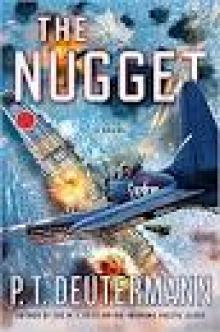 The Nugget
The Nugget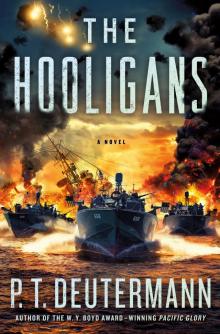 The Hooligans
The Hooligans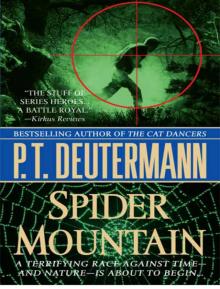 SPIDER MOUNTAIN
SPIDER MOUNTAIN![Cold Frame [retail] Read online](http://i1.bookreadfree.com/i/03/19/cold_frame_retail_preview.jpg) Cold Frame [retail]
Cold Frame [retail] Sweepers
Sweepers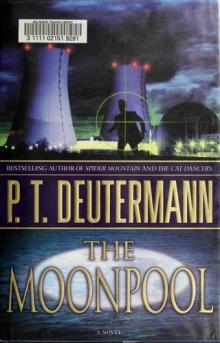 Cam - 03 - The Moonpool
Cam - 03 - The Moonpool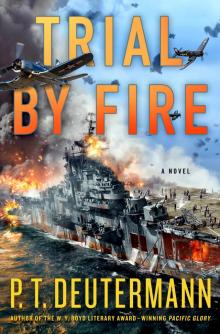 Trial by Fire
Trial by Fire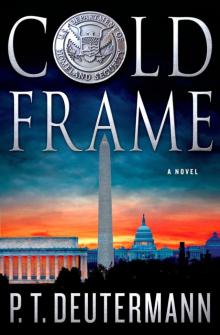 Cold Frame
Cold Frame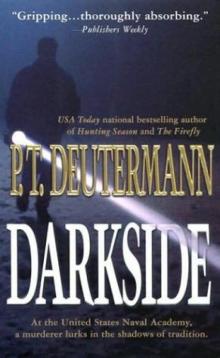 Darkside
Darkside Cam - 04 - Nightwalkers
Cam - 04 - Nightwalkers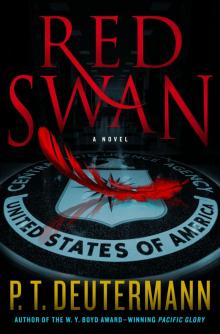 Red Swan
Red Swan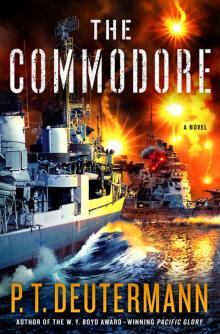 The Commodore
The Commodore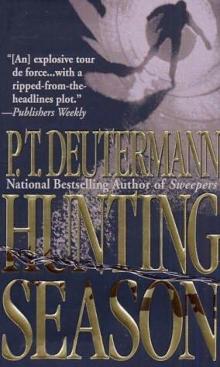 Hunting Season
Hunting Season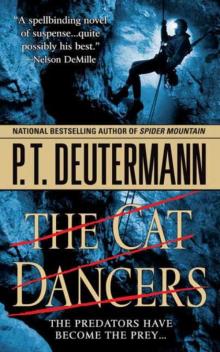 The Cat Dancers
The Cat Dancers Scorpion in the Sea
Scorpion in the Sea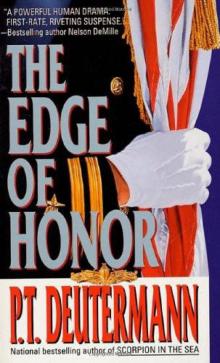 The Edge of Honor
The Edge of Honor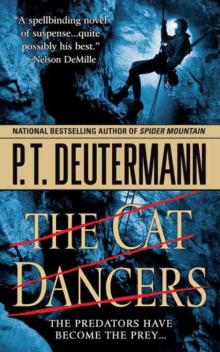 The Cat Dancers cr-1
The Cat Dancers cr-1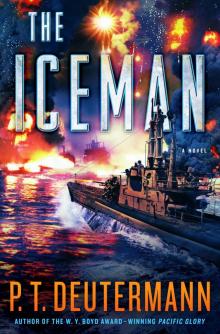 The Iceman
The Iceman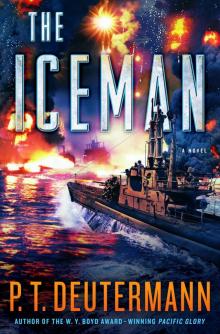 The Iceman_A Novel
The Iceman_A Novel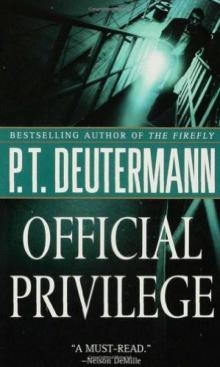 Official Privilege
Official Privilege Sentinels of Fire
Sentinels of Fire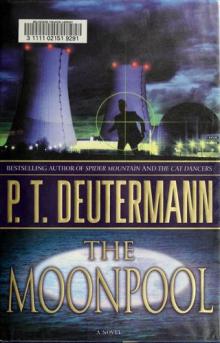 The Moonpool cr-3
The Moonpool cr-3 Nightwalkers cr-4
Nightwalkers cr-4 The Firefly
The Firefly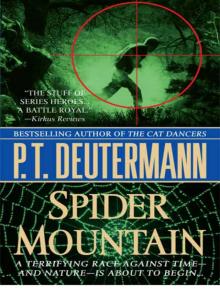 Spider mountain cr-2
Spider mountain cr-2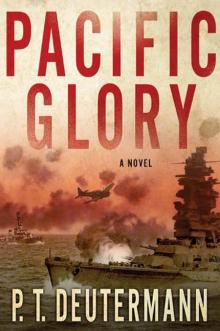 Pacific Glory
Pacific Glory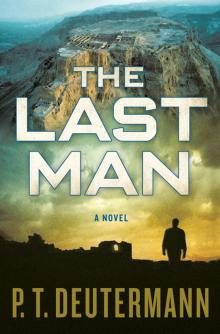 The Last Man
The Last Man